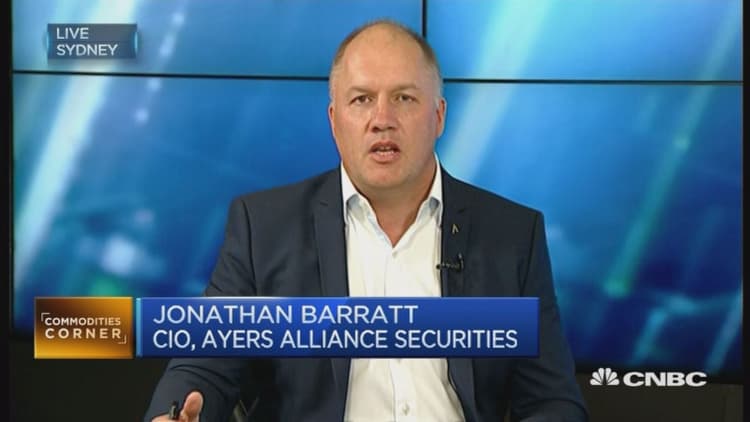
The sharp rally in metals and bulk commodities was "too much too fast," because the impact of Donald Trump's infrastructure plan on global demand was tiny compared to that of China, Goldman Sachs analysts cautioned in a report.
In his victory speech on Wednesday, Trump proposed a "$1 trillion over a 10-year period" infrastructure stimulus plan, sending iron ore prices up about 5 percent to around $74 a metric ton soon after.
Iron ore traded around $80 a ton on Monday, compared to all-time lows around $38 a ton hit 11 months ago. Meanwhile, copper prices spiked about 8 percent to above $6,000 a metric ton on Friday before retreating on Monday in Asia, with three-month copper futures on the London Metal Exchange priced around $5,620 a ton.
Goldman's analysts cautioned on the rapid nature of the run-up, which they said was not sustainable.
"We believe that the initial reaction in iron ore and copper prices has been excessive and reiterate our view for sequentially lower prices," they wrote in the report released on Friday.
This was because iron ore and copper prices depended not just on U.S. but global demand, they noted, explaining that the U.S. accounted for just 4 percent of the seaborne iron ore market in 2015—versus China's 70 percent.
Even if the U.S. imported of all of its additional steel demand under Trump's plan, the incremental impact on seaborne iron ore would only be 9 million tons a year. In comparison, China imported 950 million tons of the steel-making material in 2015.
Overall, U.S. steel and copper demand shifts would represent just a 0.4 increase in total demand, with all else constant, the analysts said.
Global growth forecasts also did not justify the price rally, the Goldman analysts continued.
Taking Trump's spending plan at face value, last week's rally in iron ore and copper prices would be consistent with a 1.5 percentage point increase in global growth expectation from the 90th percentile of the iron ore and copper cost curves — meaning the market was pricing in seven times as large an infrastructure stimulus as the "$1 trillion over a 10-year period" Trump proposal, said Goldman.

Even at the 95th percentile of the cost curves, last weeks' rally would be consistent with twice as large a stimulus as Trump mooted, and a 0.5 percentage point increase in global growth expectations.
The investment bank has not raised its global growth forecast due to uncertainty on the proposed U.S. infrastructure stimulus and whether the new administration would pursue more restrictive international trade policies, which would weigh on emerging market demand growth.
"One intuitive way of seeing this is that China exports 100 million tons of steel per year, roughly the same amount of total U.S. steel consumption. To the extent that higher tariffs slow global trade and Chinese steel exports, infrastructure spending in the U.S. may only redistribute iron ore demand from China to the U.S. rather than lifting global demand for iron ore," the Goldman analysts said.
Goldman's assumptions did not consider the extent to which the Trump administration would implement other policies such as tax cuts and deregulation, which could boost private construction activity and amplify the impact of U.S. demand on global markets.
Tailwinds in the metals market include China credit data strength and further appreciation in the Chinese yuan, they added.

